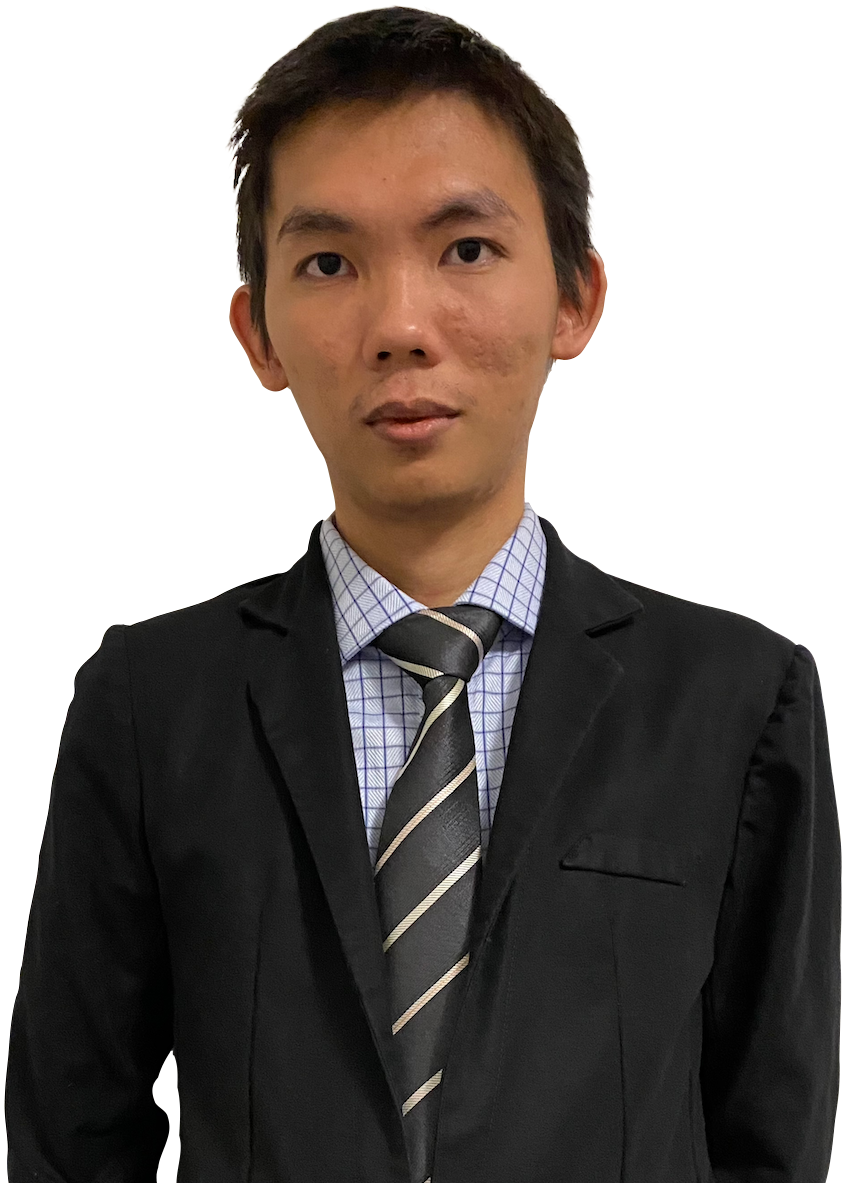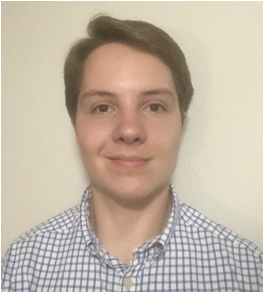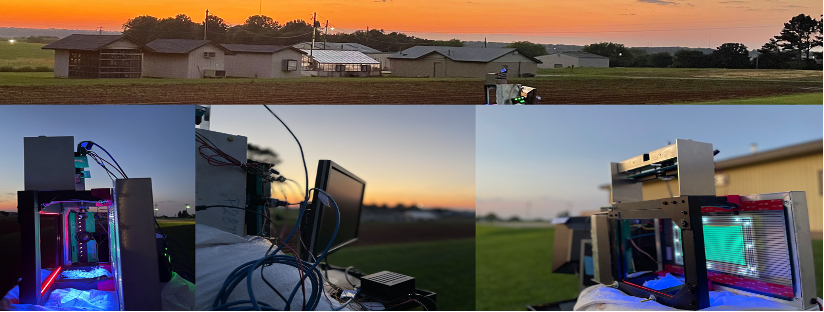Our Solution
We introduce a completed hardware design for insect monitoring. In particular, we propose a novel, end-to-end hardware that integrates a set of cameras, a motion detection sensor, a low-cost computer, and lighting modules to a unit system to capture and classify flying insects. The system consists of two cameras that capture the top view and lateral view of insects. The motion sensor is integrated to detect the existence of the insects based on their movement into the imaging zone. Then, the sensor sends a signal to the cameras to initiate image capture. The system is designed to deploy in various conditions in which the environmental lighting is not ideal for taking images (e.g., monitoring fields at night). Hence, the LEDs are integrated to support and improve the quality of taken images. The cameras and LEDs have been carefully timed by our hardware trigger design to guarantee that the cameras take images at the same time as the LED flashes so that the taken images have the best quality of brightness. Finally, the taken images are sent immediately to the low-cost computer for further processing. Particularly, the computer takes the images taken from the two cameras and performs the AI algorithm to detect and classify the types of insects. The AI algorithm has been developed by our team by using the domain adaptation technique to train the AI model in an unsupervised manner. Specifically, we develop the unsupervised domain adaptation technique to train the deep convolutional neural network on the insect photos collected on the farms. Also, the computational cost of the AI algorithm has been optimized so that we can effectively deploy on the low-cost computer. In addition, to attract the insects coming into the system, the described hardware and AI system will be attached to an existing trap system that utilizes light and semiochemicals to attract insects. To be able to deploy on the farm where the electric power is limited, the power of the entire system is provided by solar energy.
Our Team

|

|

|

|
| Dr. Khoa Luu | Dr. Ashley Dowling | Thanh Dat Truong | Pierce Helton |
| Assistant Professor | Professor | Ph.D. Candidate | Honors Student |
| khoaluu@uark.edu | adowling@uark.edu | tt032@uark.edu | pchelton@uark.edu |
Publication
Patents
[1]
Thanh-Dat Truong, Ashley PG Dowling, Randy J. Sasaka, and Khoa Luu.
Sensor-based Smart Insect Monitoring System in the Wild.
University of Arkansas Invention Disclosure, 2022.
[2]
Thanh-Dat Truong, Ashley PG Dowling, and Khoa Luu.
Smart Insect Control Device via Artificial Intelligence in Realtime Environment.
University of Arkansas Invention Disclosure, 2022.
Papers
[1] Thanh-Dat Truong, Chi Nhanh Duong, Pierce Helton, Ashley Dowling, Xin Li, and Khoa Luu.
CoMaL: Conditional Maximum Likelihood Approach to Self-supervised Domain Adaptation in Long-tail Semantic
Segmentation.
IEEE Transactions on Pattern Analysis and Machine Intelligence (Under Review).
[2] Thanh-Dat Truong, Ngan Le, Bhiksha Raj, Jackson Cothren, and Khoa Luu (2023). FREDOM: Fairness
Domain Adaptation
Approach to Semantic Scene Understanding. In Proceedings of the IEEE/CVF Conference on Computer Vision
and Pattern
Recognition (CVPR), 2023.
[3]
Pierce Helton, Ashley Dowling, and Khoa Luu.
Artificial Intelligence System for Automatic Imaging, Quantification, and Identification of Arthropods in
Leaf Litter and Pitfall Samples.
Inquiry Journal, 2022.
[4]
Thanh-Dat Truong, Naga Venkata Sai Raviteja Chappa, Xuan Bac Nguyen, Ngan Le, Ashley Dowling, and Khoa Luu.
OTAdapt: Optimal Transport-based Approach For Unsupervised Domain Adaptation.
In Proceedings of International Conference on Pattern Recognition (ICPR), 2022.
[5] Thanh-Dat Truong, Chi Nhan Duong, Ngan Le, Son Lam Phung, Chase Rainwater, and Khoa Luu.
BiMaL: Bijective Maximum Likelihood Approach to Domain Adaptation in Semantic Scene Segmentation.
In Proceedings of the IEEE/CVF International Conference on Computer Vision (ICCV), 2021.
[6] Jalata, Ibsa, Naga Venkata Sai Raviteja Chappa, Thanh-Dat Truong, Pierce Helton, Chase Rainwater, and
Khoa Luu.
"EQAdap: Equipollent Domain Adaptation Approach to Image Deblurring." IEEE Access 10 (2022):
93203-93211.
Sponsors
[2] Thanh-Dat Truong, Ngan Le, Bhiksha Raj, Jackson Cothren, and Khoa Luu (2023). FREDOM: Fairness Domain Adaptation Approach to Semantic Scene Understanding. In Proceedings of the IEEE/CVF Conference on Computer Vision and Pattern Recognition (CVPR), 2023.
[3] Pierce Helton, Ashley Dowling, and Khoa Luu. Artificial Intelligence System for Automatic Imaging, Quantification, and Identification of Arthropods in Leaf Litter and Pitfall Samples. Inquiry Journal, 2022.
[4] Thanh-Dat Truong, Naga Venkata Sai Raviteja Chappa, Xuan Bac Nguyen, Ngan Le, Ashley Dowling, and Khoa Luu. OTAdapt: Optimal Transport-based Approach For Unsupervised Domain Adaptation. In Proceedings of International Conference on Pattern Recognition (ICPR), 2022.
[5] Thanh-Dat Truong, Chi Nhan Duong, Ngan Le, Son Lam Phung, Chase Rainwater, and Khoa Luu. BiMaL: Bijective Maximum Likelihood Approach to Domain Adaptation in Semantic Scene Segmentation. In Proceedings of the IEEE/CVF International Conference on Computer Vision (ICCV), 2021.
[6] Jalata, Ibsa, Naga Venkata Sai Raviteja Chappa, Thanh-Dat Truong, Pierce Helton, Chase Rainwater, and Khoa Luu. "EQAdap: Equipollent Domain Adaptation Approach to Image Deblurring." IEEE Access 10 (2022): 93203-93211.
Sponsors

|

|
|
